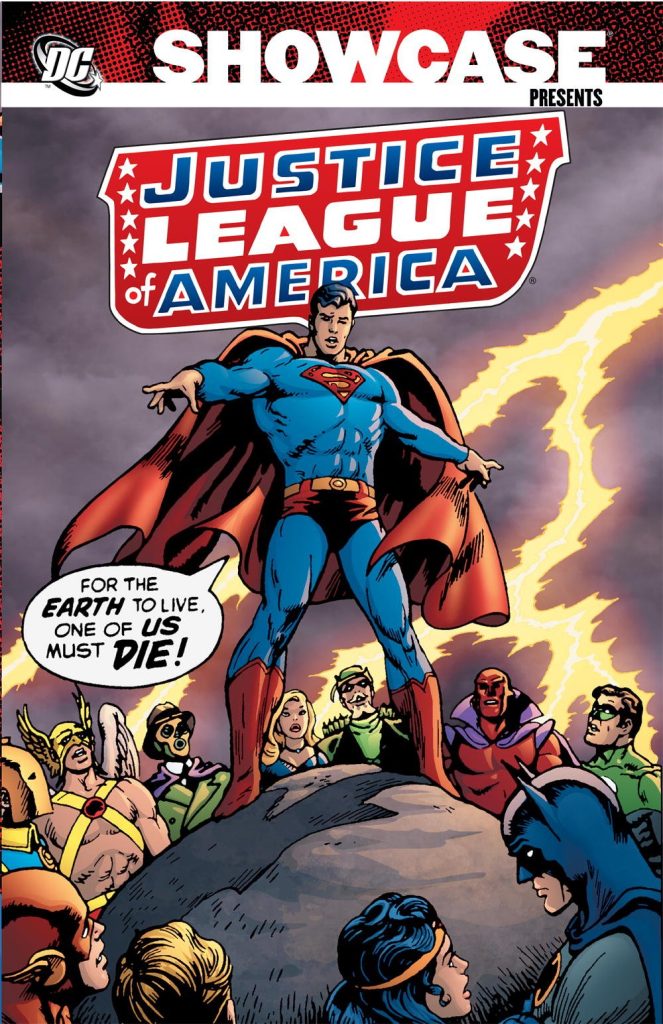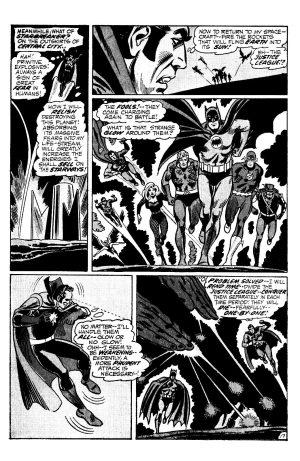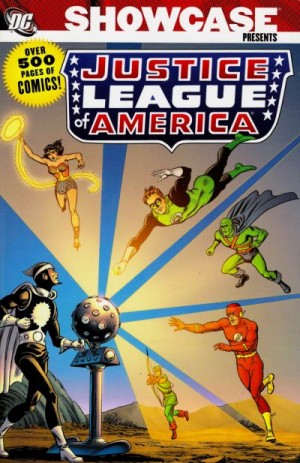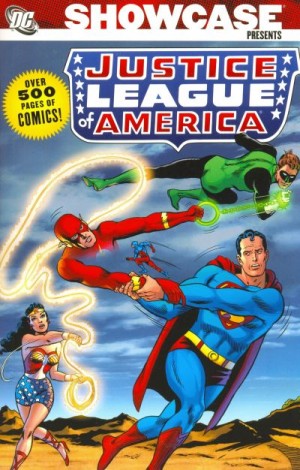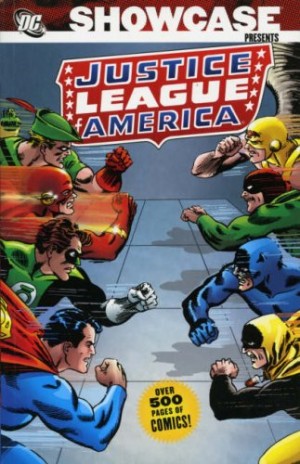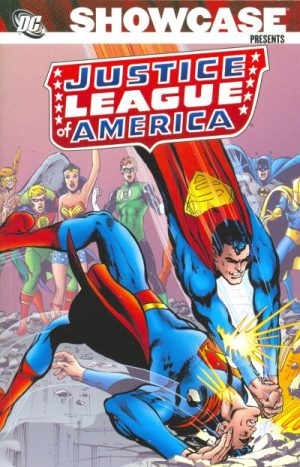Review by Frank Plowright
This black and white collection begins with Robert Kanigher’s only Justice League material (bonkers) and ends midway through Len Wein’s early 1970s run. Between them there’s the entirety of Mike Friedrich’s contribution, while with the exception of a few pages supplied by Neal Adams and Mike Sekowsky, Dick Dillin draws everything in an effective, clear and no nonsense style. He looks his best in when inked by Joe Giella, the characters inked by Dick Giordano being more angular.
Friedrich can’t be accused of sticking to a single style, and his work ranges from the experimental indulgence of a story where a transparent stand-in for SF novelist Harlan Ellison hits on Black Canary to an ambitious space opera against a merciless energy vampire. The Starbreaker tale takes some surprising turns, with a clever solution, although the desperate mood is marred by the fudged inclusion of the far earlier origin of the Justice League by Gardner Fox and Mike Sekowsky, which is fun, but inappropriate.
Real world issues rank high for Friedrich as he highlights pollution and the way soldiers returning from Vietnam were no longer viewed as heroes, public opinion having shifted greatly in their absence. Also notable is his ensuring the Justice League face problems that can’t be solved by punching, detection or a power ring, and his threats include those who’re not out and out villains, but troubled, scared or misunderstood. Harlequin Ellis falls into that category, as do an alien child and the dog he’s separated from, and the Vietnam vet. Friedrich is sometimes playful as well, having the Justice League face characters similar to Marvel’s Avengers. However, all this makes the stories sound more interesting than they actually are. Somewhere between concept and printed page most of the originality saps away, with the bombastic dialogue, occasional second person narration and the 1970s phrasing all making for uncomfortable reading.
Wein’s Justice League dispenses with the experimental writing and shunts the Justice League back into plain superhero action with identifiable villains. By today’s standards his writing is verbose and what’s meant to be playful dialogue can transmit as smarmy or sleazy, particularly where Black Canary is concerned, but Wein restores a grandeur often absent under Friedrich.
It won’t transmit now, but Wein’s updating of the lighter style so successfully employed for years by Fox was also surprising. The Seven Soldiers of Victory hadn’t been seen for almost thirty years when Wein broadened the parameters of the annual Justice League and Justice Society team-ups to include a third team, and he recognised freshening-up was required via the addition of new members. It’s a shame he didn’t consider perhaps some ought to have been women. Throughout this entire book Black Canary is the only woman in the JLA.
Friedrich deserves some credit for his restlessness, but it’s the greater fun present in Wein’s contributions that make this collection far more readable than Volume Four. His run continues in Volume Six. The entirety of that run is combined with Friedrich’s work for first hardback volume of Justice League: The Bronze Age Omnibus. Much of Friedrich’s Justice League is also available in colour paperback as The Last Survivors of Earth. The work by Kanigher and Friedrich is also available in Justice League Archives Volume 9 and Volume 10.
